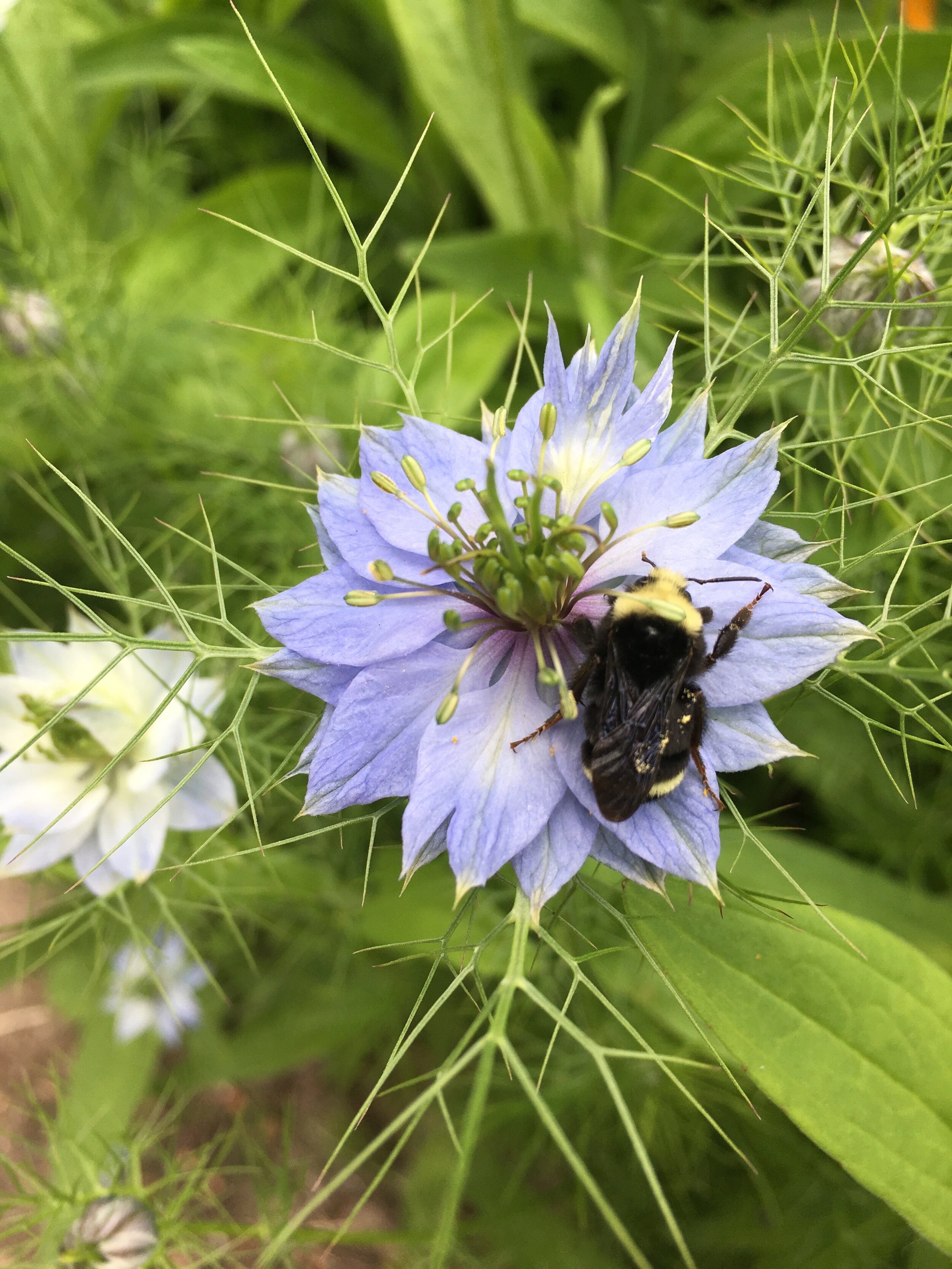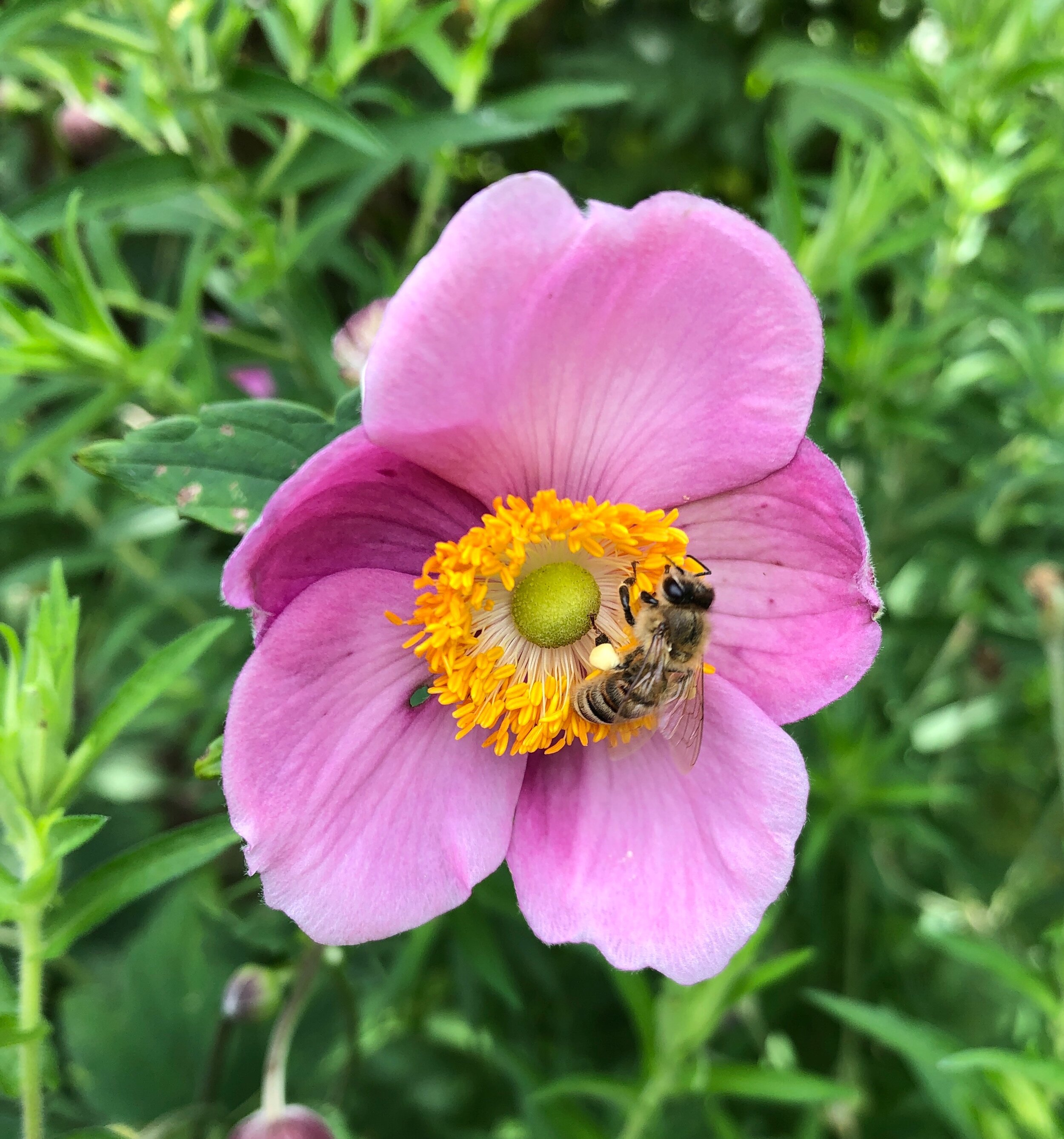Save the Bees! (but actually)
Pollinators are an essential part of the vast ecosystem that produces our food. Most of your favorite fruits are likely pollinated by bees — the list is long — and as the number of bees in the environment starts to tank, farmers are getting so worried that scientists are literally considering making robot bees! Pollinators are not only critical to our crop production, but also to the environment as a whole, and their decline is already leading to widespread ecosystem imbalances. So, while minuscule flying robots aren’t likely in our immediate future, the time to do something is now.
Despite the best efforts of the greenwashing done by most major corporations these days, many of the products that say “save the bees” on them, don’t actually have a real impact on our environment or the fate of sweet pollinators with fuzzy butts. Pollinator decline is a pretty universally accepted phenomenon of our current environmental crisis, but trying to understand exactly why it’s happening and what to do about it as layperson can be overwhelming. It makes sense that many prefer the option of simply buying a cute t-shirt with a buzzing bee on it that claims to “save the bees” when what we can actually do about pollinator decline feels out of reach and beyond our understanding.
Scientists know that bees are dying from a variety of factors—pesticides, drought, habitat destruction, nutrition deficit, air pollution, climate change and more. Sounds a bit complicated, right? Luckily, some really smart entomologists are working on the science of pollinator decline, and because of their work, we get to focus on what we can do to help. The bottom line of their research is that humans are largely responsible for the two most prominent causes: pesticides and habitat loss.
When it comes tangible actions beyond buying a cute t-shirt, there’s a handful of steps that we can all integrate into our lives to give our hardworking pollinator friends a better chance of survival:
Buy organic when possible. While organic produce often comes at a price premium, buying organic products is one of the best ways to support pesticide free products and encourage the increased production of more pesticide free products.
Outside of purchasing organic products, you can advocate for the reduced use of pesticides through policy change and legislation. This is one of the most direct ways to advocate for human and pollinator health when it comes to pesticide use, but it can often be a long legislative road to make real change. Learn about ways to advocate with the Pesticide Action Network.
Plant a pollinator garden! Research what plants are local in your area and opt for plants that are pollinator friendly. You can even look into Backyard Habitat Certification programs to get certified!
Even if you don’t have a full garden, consider a few plants on a patio or porch, or partaking in “guerilla gardening” by spreading native wildflower seeds around your neighborhood. Native plants and wildflowers make awesome seasonal patio greenery, and mix in well with other container gardening.
Unlike the whimsical vision we all have of bustling beehives (I know I did!), there are 4,000 bee species native to North America (the honey bee is a European import) and most of those don’t form hives. Instead, individual female bees lay their eggs in tunnels in decaying wood or in sandy soil. You can provide nesting spots for these native bees by leaving tree snags on your property, by leaving bare batches of sandy soil, or by building or buying native bee houses.
You know those warm sunny days that leave you wanting a big drink of water? Insects are probably thirsty too! Leave a small bowl of water covered in pebbles outside so these hardworking pals can stop and get a drink.
Take it up a notch and consider working at a community garden or starting one in your neighborhood. Support land conservation in your community by helping to create and maintain community gardens and green spaces to ensure that pollinators have appropriate habitat. Spread awareness about pollinator health and ways that others can get involved.
Avoiding purchasing industrial honey and opt for local honey products or no honey at all. You can learn all about the complicated role honey production plays in pollinator health through our deep dive into honey in our latest article.
References:


